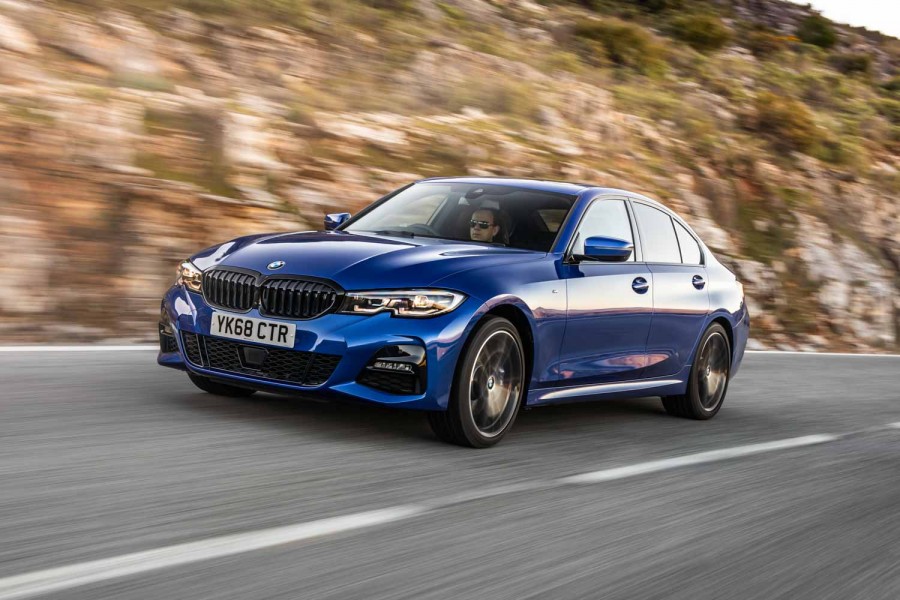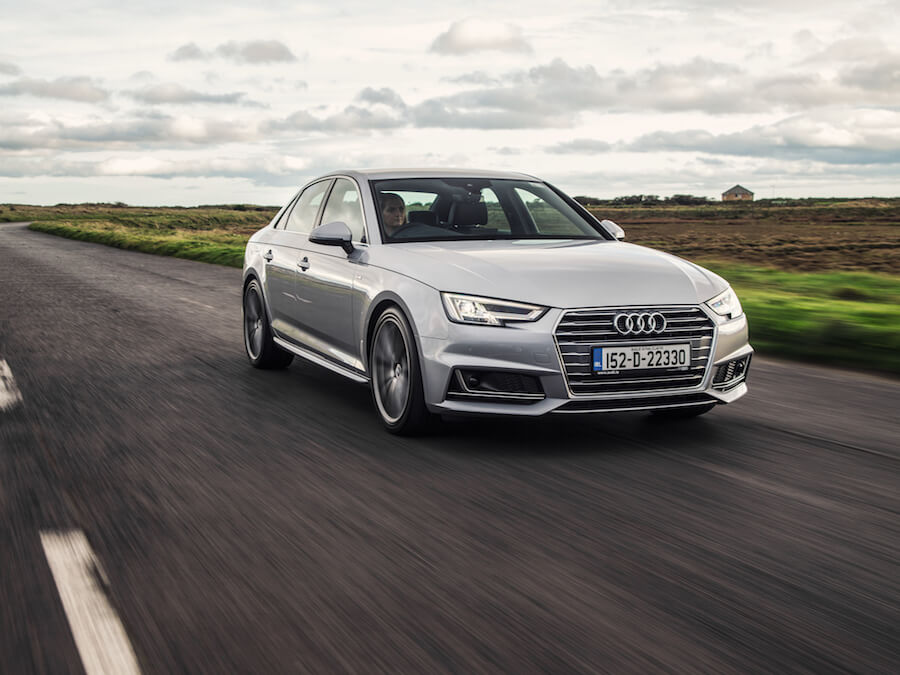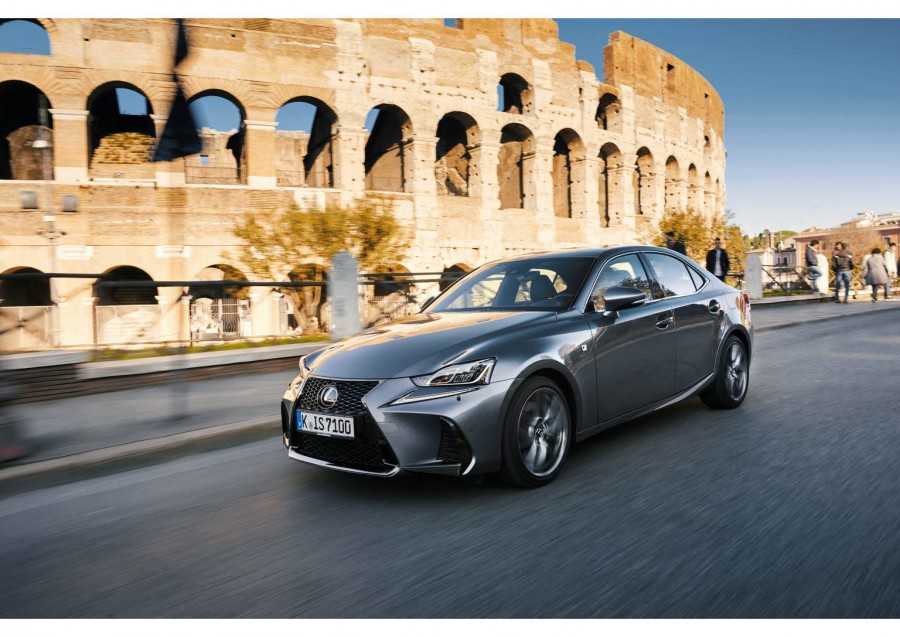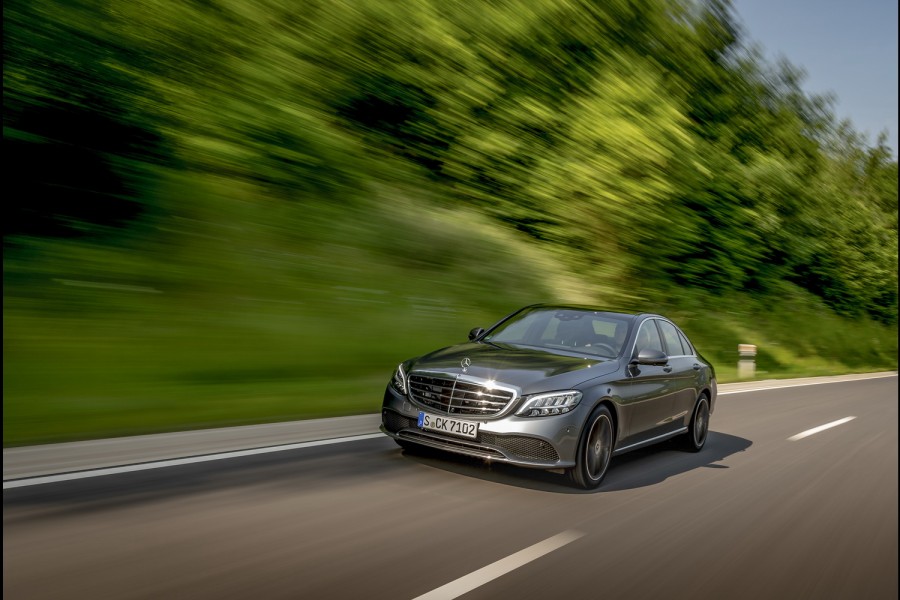Many car companies have one model that above all others that are intrinsically linked to the brand, and the 3 Series is BMW's; it has been around for almost 45 years. The current generation aims to get back to class-leading driving dynamics, and while many have panned the styling, it does still have some typical BMW traits like the 'Hofmeister kink' in the side glass outline and thankfully, for now, is free from comically oversized kidney grilles. BMW has also retained its rear-wheel-drive layout, but here we're taking our first test drive in the all-wheel-drive xDrive version.
In the metal
Like many model replacements, the seventh, 'G20' 3 Series is larger than its predecessor. With the tape measure out it comes in at 16mm wider and 76mm longer than the last generation, but more importantly, it also gains a 41mm stretch between the wheels. Greater use of aluminium in areas like the front struts and engine subframe, as well as in the bonnet and front side panels, help shed weight while overall rigidity increases. Boot space is also up to 480 litres, and you can fold down the rear seats should you need additional space.
We'll let you decide on how this latest 3 Series looks, but we think it does look best as it is seen here in its highest M Sport specification. Aside from the optional 19-inch alloy wheels, this spec gets unique front and rear bumpers that give it a more potent appearance.
BMW's designers have done quite a decent job in making the interior of the new 3 Series feel spacious. Even having used it in some of BMW's other models, the new layout of the digital instrument isn't always the easiest to read at a glance, but the optional head-up display, which is quite large, can now relay enough information (including navigation details) that it reduces your reliance on the main display.
Most of the controls around the gear selector sit flush, and the latest iDrive rotary controller remains one of the best and most intuitive systems to use. One further advantage is that the large infotainment screen is also touch sensitive, so you get a choice as to how you interact with it. Have a poke around the rest of the interior as some parts and materials don't look or feel quite as premium as some buyers might expect from BMW, but overall it feels well-assembled.
Driving it
Some cold and wet Irish roads would have made for a better test of BMW's xDrive system rather than the warm, grippy tarmac of southern Spain, but that's all we had at our disposal this time out. Unlike some all-wheel-drive transmissions that engage only when needed, the xDrive system permanently employs all four wheels, typically with a 30:70 front-to-rear bias, though this changes continuously according to grips levels. Helping matters further was the fitment of grippy Michelin Pilot Sport 4 tyres to our test cars.
The 2.0-litre turbodiesel engine is unchanged from the rear-wheel-drive 320d's. With the eight-speed automatic, it makes for a good pairing. For the most part, the transmission keeps the engine spinning in a sweet spot between 1,900- and 2,800rpm to exploit the 400Nm of torque available.
For normal day-to-day driving, the twin-turbocharged four-cylinder churns out enough performance while returning good fuel economy. You can ask more from it, and even when the engine is working harder, it remains smoother and quieter than we've seen in previous iterations of this engine.
Should you decide to utilise the paddles behind the wheel to change gears manually, it's most rewarding to do so in the Sport mode as it delivers a more noticeable shift with each pull. That said, if you're chasing performance from your 3 Series, it may be better looking to the more powerful 330d, as in this guise the 320d feels more tuned towards efficiency.
There are some subtle differences as a result of the all-wheel-drive transmission. Both front are rear tracks are narrower by 16- and 17mm respectively, but it gets 30mm offsets at either end compared to 22mm on the rear-wheel-drive models. The turning circle also increases by 0.55 metres.
More noticeable was the difference in ride quality between cars with the passive M Sport suspension and the Adaptive M Sport suspension, which we're driving here. In every mode, even Comfort, the ride feels firmer than the standard M Sport suspension setup. And bear in mind that M Sport cars receive a firmer setup than SE or Sport models in the first place.
Considering that we were driving on mostly smooth roads, this configuration might not bode so well for lesser quality roads back in Ireland. By way of comparison, we also drove the same route in a rear-wheel-drive 320d without the adaptive suspension and found it to be more compliant and better overall. Certainly something to consider when you come to choosing the specification of a car.
The steering in the M Sport version of the 320d xDrive is the Variable Sport system, and it's excellent, reacting quickly to inputs and providing enough feedback so that you can feel precisely what the front wheels are doing. With more powerful versions of the 3 Series, this steering setup could be even more enjoyable to use.
As a complete package the 320d xDrive works well, and other than our comments on the adaptive suspension, it marks an improvement over the previous model. It's also worth mentioning the higher levels of refinement, inside the cabin in particular. At motorway cruising speeds there is little in the way of road or wind noise thanks to the acoustic glazing on the windscreen (and optionally on the side windows), which, combined with the quieter engine, make for an enjoyable driving experience, especially over longer distances.
What you get for your money
All 3 Series xDrive models come with the automatic transmission as standard. The M Sport specification includes 18-inch alloy wheels with run flat tyres (which are different to what we experienced in this review), LED headlights and a gloss black finish to the window surround. The M Sport specification adds unique bodywork and also a specific suspension setup that also features the Variable Sport steering.
BMW offers a range of upgrade packages that groups together commonly ordered options. The Comfort Package, for example, adds keyless access, electric boot operation, heated steering wheel and additional storage inside the cabin. A Visibility Package upgrades the LED headlights to the longer-range Laserlights, and this adds a high-beam assistant, too.
The Premium Package features electric front seats and a sunroof, while the Technology Package adds a Harman/Kardon surround sound system, enhanced Bluetooth with wireless device charger, BMW's Gesture Control and a sizeable head-up display.
Finally, the M Sport Plus package adds larger 19-inch wheels, a rear spoiler, extra Shadow Line gloss black elements to the bodywork, the M Sport braking system, M Sport seatbelt details and the adaptive M Sport suspension.
Summary
In the latest 3 Series, BMW has upped the quality and refinement over its predecessor. For some, the addition of an all-wheel-drive system will be useful when driving in more challenging conditions. However, our recommendation is to skip the fancy adaptive suspension and stick with the standard setup and spend the money on other upgrades. All told, the 3 Series is back to being a driver's car.





































